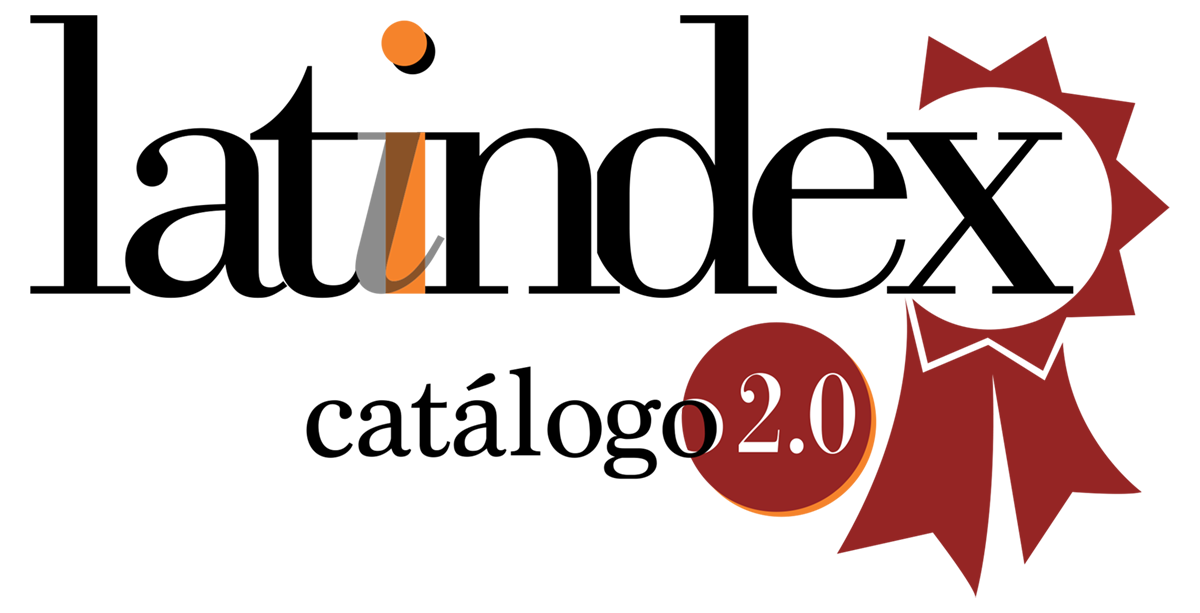Visibility of Women's Roles in Science
Activities for Reflection
DOI:
https://doi.org/10.24215/18529569e045Keywords:
equity, gender, scientists, feminist epistemologyAbstract
The commemoration of the International Day of Women and Girls in Science aims to improve girls' access to science and make visible the role of women in the scientific community. In line with the activities that are carried out every year on this date, this article addresses the actions that were carried out in 2023 at the Faculty of Biochemical and Pharmaceutical Sciences of the National University of Rosario (graphic exhibitions, discussions and scientific experiences) with the aim of highlighting the importance of integrating the gender perspective in university education and promoting equity in the scientific field.
Downloads
References
Abad, M. F. (2022). La epistemología feminista: una forma alternativa de generación de conocimiento y práctica. Contribuciones desde Coatepec, (37). https://revistacoatepec.uaemex.mx/article/view/19565/
Avila, A., Trabajo Mansilla, F. y Morlas, N. (2019). Tabla Periódica de las Elementales [Material didáctico]. http://hdl.handle.net/2133/26431
Bozal, A. G. (2008). Mujeres y ciencia: techos de cristal. EccoS Revista Científica, 10(1), 213-232. https://doi.org/10.5585/eccos.v10i1.1056
Cazzaniga, N. (2020). María Isabel Hylton Scott (1889-1990): primera malacóloga argentina y docente universitaria [Conferencia]. XI CLAMA - Mesa Redonda III: Reflexionando sobre la historia de la malacología latinoamericana.
Comesaña, N. T. y García, N. C. (2023). Claves comunes entre la extensión crítica y la epistemología feminista. Cuadernos de Extensión Universitaria de la UNLPam, 7(1), 87-106. https://cerac.unlpam.edu.ar/index.php/cuadernos/article/view/7031
Cristal, Y. (2020). 150 años de ingeniería argentina. Revista Argentina de Ingeniería, (16), 46-63.
Eliot, L., Ahmed, A., Khan, H. y Patel, J. (2021). Dump the “dimorphism”: Comprehensive synthesis of human brain studies reveals few male-female differences beyond size. Neuroscience & Biobehavioral Reviews, (125), 667-697.
https://doi.org/10.1016/j.neubiorev.2021.02.026
Estébanez, M. E. (2010). Género y profesión en el análisis de la ciencia argentina [Ponencia]. En Foro nacional interdisciplinario mujeres en ciencia, tecnología y sociedad. Centro Atómico Bariloche, Argentina.
Fine, C. (2013). Is There Neurosexism in Functional Neuroimaging Investigations of Sex Differences? Neuroethics, 6(2), 369-409. https://doi.org/10.1007/s12152-012-9169-1
Friedrichs, K. y Kellmeyer, P. (2022). Neurofeminism: Feminist critiques of research on sex/gender differences in the neurosciences. European Journal f Neuroscience, 56(11), 5987-6002. https://doi.org/10.1111/ejn.15834
García, M. I. G. y Sedeño, E. P. (2002). Ciencia, tecnología y género. Revista Iberoamericana de Ciencia, Tecnología, Sociedad e Innovación, 2(5). http://hdl.handle.net/10261/9488
García, S. V. (2006). Ni solas ni resignadas: la participación femenina en las actividades científico-académicas de la Argentina en los inicios del siglo XX. Cadernos pagu, (27), 133-172. https://periodicos.sbu.unicamp.br/ojs/index.php/cadpagu/article/view/8644772
Grotz, E., Plaza, M. V., González del Cerro, C., González Galli, L. M. y Di Marino, L. (2020). La Educación Sexual Integral y la Perspectiva de Género en la Formación de Profesorxs de Biología: un análisis desde las voces de lxs estudiantes. Ciênc. educ. (Bauru), (26). https://doi.org/10.1590/1516-731320200035
Hitchens, A. P. y Leikind, M. C. (1939). The introduction of agar-agar into bacteriology. Journal of Bacteriology, 37(5), 485-493. https://journals.asm.org/doi/pdf/10.1128/jb.37.5.485-493.1939
Ingalhalikar, M., Smith, A., Parker, D., Satterthwaite, T. D., Elliott, M. A., Ruparel, K., ... y Verma, R. (2014). Sex differences in the structural connectome of the human brain. Proceedings of the National Academy of Sciences, 111(2), 823-828. https://www.pnas.org/doi/epdf/10.1073/pnas.1316909110
Joel, D., Berman, Z., Tavor, I., Wexler, N., Gaber, O., Stein, Y., ... y Assaf, Y. (2015). Sex beyond the genitalia: The human brain mosaic. Proceedings of the National Academy of Sciences, 112(50), 15468-15473. https://www.pnas.org/doi/epdf/10.1073/pnas.1509654112
Labombarda, F. (2022). Educando al cerebro con Florencia Labombarda [Conferencia]. Espacio Transmedia de Ciencia, Tecnología e Innovación (TEC). https://www.youtube.com/watch?v=pPCULpkFMrQ
Macho Stadler, M. (5 de octubre de 2016). Fanny Hesse y el agar-agar: de la cocina al laboratorio. https://mujeresconciencia.com/2016/10/05/Fanny-hesse-y-el-agar-agar-dela-cocina-al-laboratorio/
Martínez, C. D., García, P. D. y Sustaeta, P. N. (2020). Sesgos de género ocultos en los macrodatos y revelados mediante redes neurales. Reis: Revista Española de Investigaciones Sociológicas, (172), 41-59. https://www.juntadeandalucia.es/institutodelamujer/institutodelamujer/ugen/node/4424
Medina, J. M. y Tommasino, H. (Comps.) (2022). Extensión crítica. Construcción de una universidad en contexto. Sistematización de experiencias de gestión y territorio de la Universidad Nacional de Rosario. UNR Editora.
Menéndez, G. (2015). La integración de las funciones sustantivas y la misión social de la Universidad [Ponencia]. En J. M. Medina (Comp.), Actas del VI Congreso Nacional de Extensión Universitaria. UNR Editora. http://beu.extension.unicen.edu.ar/xmlui/handle/123456789/189
Cano Menoni, J. A. (2014). La extensión universitaria en la transformación de la universidad latinoamericana del siglo XXI: disputas y desafíos. Consejo Latinoamericano de Ciencias Sociales (CLACSO). https://bibliotecarepositorio.clacso.edu.ar/handle/CLACSO/10952
Merton, R. K. (1968). The Matthew Effect in Science: The reward and communication systems of science are considered. Science, 159(3810), 56-63. https://doi.org/10.1126/science.159.3810.56
Poulin, R., McDougall, C. y Presswell, B. (2022). What’s in a name? Taxonomic and gender biases in the etymology of new species names. Proceedings of the Royal Society B: Biological Sciences, 289(1974). https://doi.org/10.1098/rspb.2021.2708
Pozo-Sánchez, B. y Padilla-Carmona, C. (2021). Criptoginia: una palabra nueva, un concepto para investigar. Quaderns de Filologia-Estudis Lingüístics, (26), 175-192. https://doi.org/10.7203/qf.0.21983
Ritz, S. A., Antle, D. M., Côté, J., Deroy, K., Fraleigh, N., Messing, K., ... y Mergler, D. (2014). First steps for integrating sex and gender considerations into basic experimental biomedical research. FASEB journal: official publication of the
Federation of American Societies for Experimental Biology, 28(1), 4-13. https://doi.org/10.1096/fj.13-233395
Rossiter, M. W. (1993). The Matthew Matilda effect in science. Social studies of science, 23(2), 325-341. https://doi.org/10.1177/030631293023002004
Tesch, B. J., Wood, H. M., Helwig, A. L. y Nattinger, A. B. (1995). Promotion of Women Physicians in Academic Medicine. Glass Ceiling or Sticky Floor? JAMA, 273(13),1022-1025. https://doi.org/10.1001/jama.1995.03520370064038
Additional Files
Published
How to Cite
Issue
Section
License
Copyright (c) 2024 Cecilia Beatriz Di Capua, Ana Bortolotti, Romina Denis Ceccoli, María Belén Campero

This work is licensed under a Creative Commons Attribution-NonCommercial-ShareAlike 4.0 International License.
The acceptance of an original by the journal implies the non-exclusive transfer of the patrimonial rights of the authors in favor of the publisher, who allows the reuse, after its edition (postprint), under a Creative Commons License Attribution-NonCommercial-ShareAlike 4.0 International.
According to these terms, the material can be shared (copy and redistribute in any medium or format) and adapted (remix, transform and create another work from the material), provided that a) the authorship and the original source of their publication (magazine and URL of the work) are cited, b) is not used for commercial purposes and c) the same terms of the license are maintained.
The assignment of non-exclusive rights implies that after postprint in Extensión en red authors may publish their work in any language, media and format; in that case, it is requested that they signal that the material was originally published by this journal.
Assignment also entails the authors’ authorization for the work to be collected by SEDICI, the institutional repository of the Universidad Nacional de La Plata, and for it to be indexed in the databases that the publisher thinks appropriate for enhancing the visibility of the published work and its authors.
In addition, the journal encourages authors to submit their works to other institutional and thematic repositories after their publication in Extensión en red, under the assumption that offering society unrestricted access to scientific and academic production contributes to a greater exchange in global knowledge.








.jpg)

.png)


.png)





















